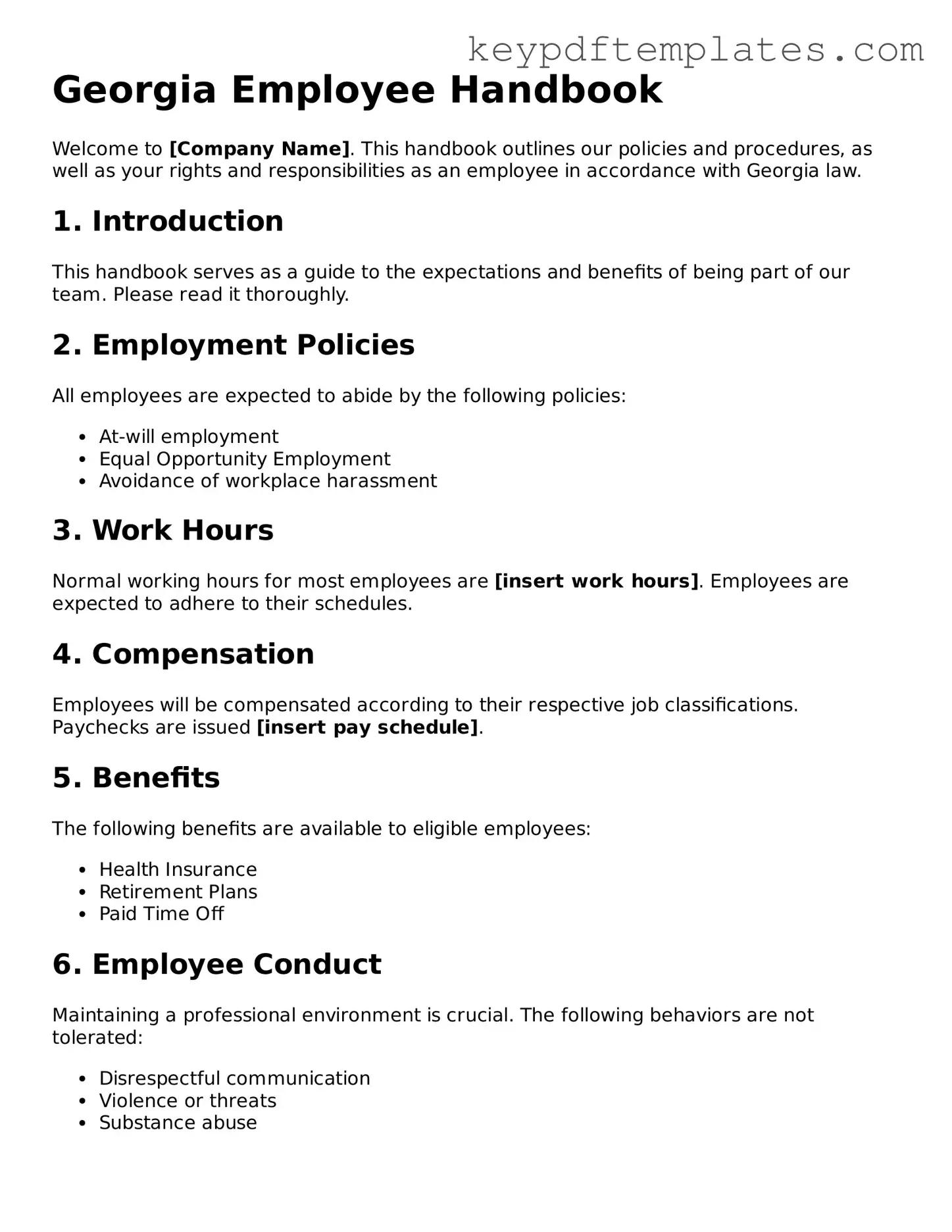Legal Employee Handbook Document for the State of Georgia
The Georgia Employee Handbook form serves as a vital document that outlines the rights, responsibilities, and policies governing the employer-employee relationship in Georgia. This handbook not only helps to establish clear expectations but also protects both parties by ensuring compliance with state and federal laws. Understanding the importance of this form is crucial for any business operating in Georgia.
Modify Document Online
